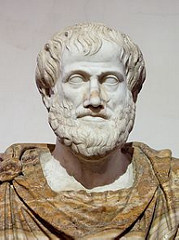
All humans have a right to life.
All unborn babies are humans.
Conclusion: All unborn babies have a right to life.
The first premise: All humans have a right to life.
All humans have a right to life is a fundamental human right and a primary precept of civilized societies. The constitution of the USA as well as the constitutions of most countries guarantees humans the right to life as an inalienable right that needs to be protected. The Universal Declaration of Human Rights proclaimed by the United Nations in 1948 set the right to life as one of its standards for all nations and all peoples. Absent this basic freedom humans cannot adequately function; how could they? History has repeatedly displayed that if the human right to life is oppressed in a society, then the society decays and eventually collapses because society is made up of humans and humans need, at least, the freedom of the right to life to exist in the society that in part forms their culture. The human right to life is an inalienable right that is the foundation that supports civilized societies and their cultural milieu.
An objection to the first premise.
A murderer is a human and does not have a right to life. However, his/her right to life may be forfeited because of his/her action to remove another human from his/her role in society by murder. Societal role disruption by an adjudicated murderer may be a factor in negating a human’s right to life. However, some societies do not support the death penalty and therefore the adjudicated murderer enjoys a right to life reprieve. Thus the premise stands, at least in these societies, that all humans have a right to life.
A second objection to the first premise.
A terminally ill human my desire to terminate his/her right to life. A desire to terminate one’s own life does not challenge the first premise because it is the human that desires to terminate or not to terminate his/her life. Suicide or euthanasia may be permitted in some secular societies and is left to the individual, but suicide or euthanasia is not permitted in other religious societies e.g. Roman Catholicism. Suicide or euthanasia does not negate the first premise.
A third objection to the first premise.
Family members may desire to terminate a family member’s life because of a terminal illness to alleviate suffering or address the deteriorating quality of life of the family member. That desire to terminate a family member’s life is a form of euthanasia. Euthanasia is a slippery slope that is full of unintended consequences and legal vagaries. Unless previously stated by the affected family member in a medical power of attorney, family members do not have the right to alter the basic premise that all humans have a right to life.
A fourth objection to the first premise.
Pro-choice advocates claim that a women’s choice is paramount in deciding between adoption, motherhood or abortion. It is accurate to state that a women has a right to determine what happens to her own body. However, if an unborn child is attached to the womb of a women, then the women’s decision to abort is not only hers to make. The unborn child that is attached to the women is a separate living human entity who cannot make the decision. A desire to live is a most basic human instinct that likely is the instinct of an unborn child. If a pregnant women is killed in an auto accident by a drunk driver, then that driver is charged with the manslaughter of two humans…the women and the unborn child. The first premise stands: all humans have a right to life.
The second premise: All unborn babies are humans.
All unborn babies are humans because they have human parents. What else could they be? They cannot be anything else but human beings. They are human beings at a very early stage of development and their developmental stage does not deter from the fact that they are human beings. The only differences in unborn babies from born babies are their size, level of development, environment and dependency. None of these differences prohibit unborn babies from being classified as human beings.
An objection to the second premise.
The viability of unborn babies to survive outside the womb is a deciding factor to their personhood. They are not, under the law, considered a viable person because they cannot survive outside the womb and thus should not be protected under the law. If they are not a viable person, then what are they? Could they be a viable person to be? The differences between unborn babies and born babies noted in the second premise negate the viability argument.
A second objection to the second premise.
Medical technology can create and embryo in a laboratory by uniting a female human egg and a male human sperm. This technology does not alter the fact that the embryo created outside a human body is still a product of human parents. A test tube embryo is a human unborn baby because its parents were human parents.
The conclusion: All unborn babies have a right to life.
If the premises are true, then the conclusion is logical. The premises stated in this syllogism are true therefore all unborn babies have a right to life.




 Subscribe to our RSS Feed
Subscribe to our RSS Feed